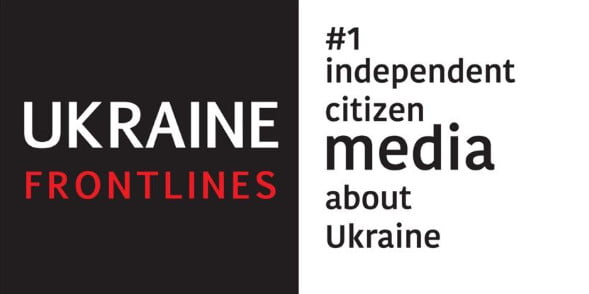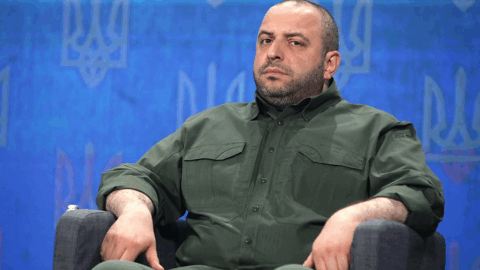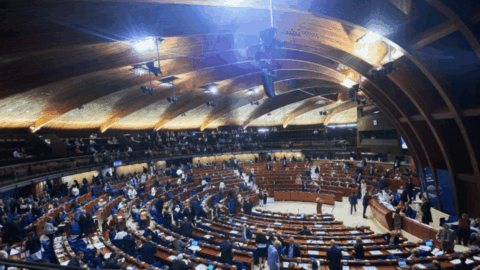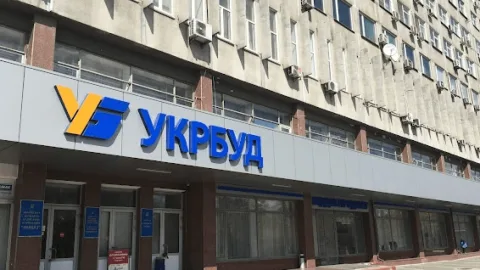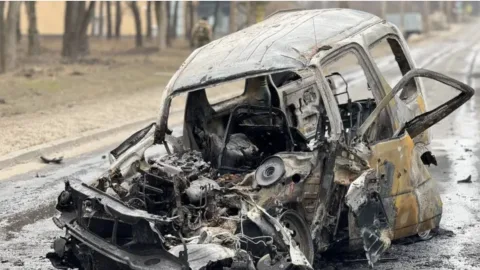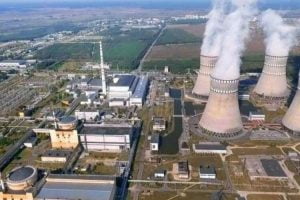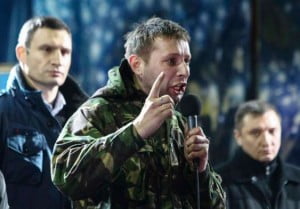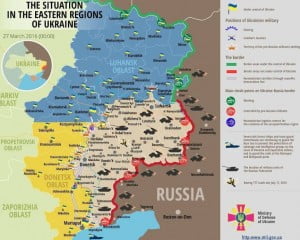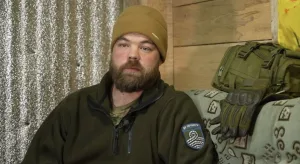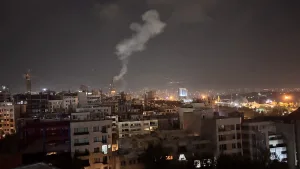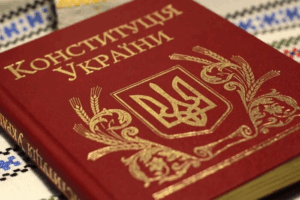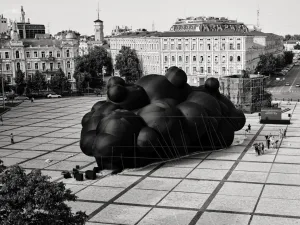The New Year holidays made the news of another accident at the Rostov NPP go unnoticed. Yes, exactly another and exactly an accident at the nuclear power plant, which is very close to our border.
The Rostov nuclear power plant, a branch of the Rosenergoatom Concern (Rosatom Group), was called the Volgodonsk NPP from the beginning of its construction until 2010. It is located on the bank of the Tsimlyansk Reservoir, 13.5 km northeast of Volgodonsk. Rostov-on-Don and Volgograd are 205 km and 175 km from the plant. The plant is equipped with four VVER-1000 type reactors, the installed capacity of power units 1-3 is 1,000 MW, and unit 4 has a capacity of 1,030 MW.
On Saturday, December 31, 2022, around 8:00 p.m. (local time), a fire broke out at the Rostov NPP in the Russian city of Volgodonsk. According to the official version, the fire was caused by the ignition of lubricant oil in the transformer on power unit 3 during operation. As a result of the accident, one employee died, another is in intensive care. The power unit where the emergency occurred is not working and is disconnected from the grid.
Before the accident on January 1, 2022, power unit 3 of the Rostov NPP was shut down for a scheduled 43- day overhaul, i.e., the lubricant oil ignited in a non-operating transformer.
According to Rosenergoatom, the power plant has planned a major overhaul of the reactor and its main equipment, major overhaul of the turbine generator, overhaul of the main equipment of the turbine section and overhaul of the safety systems.
Well, we cannot believe what Russia officially reports; actually it should be completely ignored.
In fact, the situation at the Rostov NPP is very complicated, it isn’t the first shutdown, and not the first repair under emergency circumstances.
A month before the accident – and you already understood that there were several of them – rumors spread in the social media of the Rostov region that a person had died at the NPP again.
Again, because a terrible accident was recorded in the summer of 2022, then the social media began to write that a worker’s death was caused by an accident (crack) somewhere in the power unit.
Since Russia monitors social media, all discussions about why there were helicopters and emergency equipment were quickly deleted.
By monitoring the social media of the Rostov region, I calculated that accidents or deaths at the Rostov NPP located in Volgodonsk were reported 4 times last year. Each time it was a fire, a crack or a stoppage and a death of one or more people, but it was concealed.
Well, the question is very interesting, especially since Russia is now under sanctions, and it’s hard to replace any component at NPPs, because most of the components are made in Germany and France. For example, SAS 550 current transformers manufactured by TrenchGermanyGmbH of TrenchGroup Corporation are installed on the 500 kV open switchgear of the Rostov NPP.
I don’t know if sanctions have been applied to the NPP components, but these German companies, suppliers of NPP components to Russia, are monitored.
Nevertheless, let’s start from the beginning. Because the accident that happened on the eve of the New Year is deep-rooted.
The construction of the Rostov NPP began in 1977, and it was put into operation in 2001. The last fourth unit was commissioned in 2015. That is, the main construction started in the times of the USSR. For example, the construction of the Chornobyl NPP began in 1970, and its first unit was launched in 1977.
We know how everything was built in Soviet times. About the same way as the Russian army was modernized: some built castles, some saved in dollars, and some bought a house abroad. They stole everything cement, nails, stones, boards, not to mention more important things.
The technical project of the Rostov NPP station was developed by the Gorky branch of the Teploelektroproekt (GoTEP) institute (now JSC IC ASE). The project involved the construction of a nuclear power plant according to the unified U-87 design with VVER-1000/320 reactor units as part of four power units with an electrical capacity of 1,000 MW each, with the possibility of building two more power units in the future and increasing the total electrical capacity of the plant to 6 GW.
The project task for the construction of the Chornobyl NPP with a capacity of 2,000 MW was carried out by the Ural Department of the Teploelektroproekt institute.
We also know how projects were done in the USSR time. They stole ideas, added titles, took people from the Central Committee of the CPSU as their leaders, so no wonder that there were “cracks” in the project calculations, which subsequently led to a disaster.
Therefore, they say in Russia that the Rostov NPP is the second Chornobyl, or a coffin with a nuclear warhead. As people from Rostov told me, accidents at their NPP are commonplace and old-timers remember that the first accident occurred 2 weeks after the launch, i.e. in 2001.
Well, let’s review the history of accidents at the Rostov NPP known from the information space.
For example, on May 27, 2019, the Russian media reported on a dangerous situation at the Rostov NPP.
I quote: “On May 27, 2019, preventive protection was activated at the Rostov nuclear power plant in Volgodonsk. The turbine generator of the third power unit had to be turned off due to a drop in the reactor power. Rosenergoatom assured that the radiation background at the NPP had not changed and did not exceed natural background values.”
After the 2019 accident, the liquidator of the consequences at the Chornobyl NPP, academician of RANS Mykola Tarakanov said that the situation at the Rostov NPP could be very serious. He reminded that a reactor failure similar to the one in Rostov caused the tragedy at the Chornobyl NPP, so one should take into account the fact that the Rostov NPP is an almost exact copy of the Chornobyl NPP, because it was designed according to the same model. “In principle, a drop in power is safe, but only if the drop doesn’t continue and nothing is done to raise that power. And raising the power can end in a real accident,” the expert explained then.
The fourth power unit of the Rostov nuclear power plant in Volgodonsk, where the accident occurred in 2019, was launched on December 15, 2015. However, problems with the cooling system were discovered in it almost immediately and that led to the shutdown of the unit and elimination of the consequences of the accident.
Let’s move on. Because this NPP has plenty of hidden “skeletons in the closet.”
One of the scariest is the “skeleton” of November 4, 2014, when the news about the shutdown of the Rostov NPP shocked the entire world community.
We didn’t care then, because there were fierce battles in Donbas, so I’m sure that many people took no notice of that news. For example, people in the Luhansk region didn’t hear about it at all, as they were under occupation and had no access or ability to monitor information.
On November 4, the power supply of the entire south of Russia was cut off in a cascade, which, of course, caused panic, as everyone understood that a large-scale disaster had occurred at the nuclear power plant, possibly with negative consequences.
All officials took their families out of the Rostov region then, and the Rostov Platov airfield, where charter flights took off every minute, was blocked by the police so that ordinary people could not prevent the evacuation of the elites.
Later, the Rostov NPP information department reported that the shutdown of the power units was caused by problems in the electrical part of the system, but the radiation background was normal, the accident occurred due to the “dumping” of two units and widespread large-scale disconnection of consumers of the united energy system of the South.
Later the researchers presented the following results of their investigations of the situation at the Rostov NPP, I quote:
“November 4, 2014, 5: 23. Operational personnel of the Rostov NPP presumably put the PL-500 kV Pivdenna under repair, for this purpose, operational switching is carried out on the open switchgear 500 kV (ORP 500 kV). When one of the switches (presumably, B-50 according to the scheme) is turned on, 500 kV voltage is applied to the grounding blades. A short circuit occurs. It probably happened in the B-50 and B-51 switches, that is, one of the three grounding blades was turned on: ZRV-50L, ZRV-51L or ZRS. And then the count went by milliseconds.
After 76 milliseconds, the B-50 switch is disconnected from protection and the short circuit is terminated. And it would seem that the personnel error was eliminated by the successful protection operation, and the plant and the power system were supposed to continue working… But no! At the same time, busbar protection of 4 sections of 500 kV – differential busbar protection (DBP) is started and operated. All further troubles begin with it.
This protection must be triggered only against short circuit only on the 500 kV busbars, but not elsewhere (protection with absolute selectivity). But the protection started and there was no way back. It began disconnecting all the outgoing 500 kV lines connected to the 4th section of the ORU-500 kV.
The station lost its load in a matter of seconds. Of course, having lost the load, the generators began to accelerate, because there was no load but the power on the turbine remained the same. But generators must not accelerate. Firstly, de-synchronization begins, that is, the generator voltage vector begins to “overtake” the power system voltage vector, and secondly, the may be mechanical destruction of the turbine or generator elements.
Therefore, AROL automation immediately disabled one generator, and then another. And, naturally, it is assumed that the special automation of the reactors “muffled” them a little, but it all happened according to the operating procedures. In such cases, ARBKZ automation (automatic unloading in case of close short circuits) sometimes works, but it is not often used, and it seems it was not used at Rostov NPP.”
To put it a bit simpler, at 5am on November 4, within an hour, as a result of the cascading development of the accident at the Rostov NPP, two power units, the 500 kV line Frolivska-Volga HPP were disconnected and the connection between the South UES and the Center UES was broken with the loss of power in distribution networks, and by 10 a.m. the connection between power systems was restored and power unit 2 of the Rostov NPP was put into operation, but power unit 1 went into normal operation only on November 6.
But then, almost immediately, there was a “scheduled” shut down of the second power unit of the Rostov NPP due to a “small” defect in the heat exchange circuit, and people were told that the radiation background was normal.
I would like to note that residents of the city never received safety equipment, were never evacuated, or given “potassium iodide”, drinking water, etc. But they were always informed that “the background is normal”.
If we examine it carefully, it becomes clear that after an accident on one unit, there was an accident on the second almost immediately, and so on.
According to the investigation of the 2014 cascade accident, it was caused by an error of Rostov NPP operating personnel in unblocking the EMB, incorrect operation of the relay protection, which disconnected the NPP from the power system of the South, which formed prerequisites for further generator shutdowns and triggering of the emergency automation and disconnection of the South UES. That technical error was made at the project stage.
The investigation of the special commission of Rostechnadzor showed that the redundant operation of the RZU in case of a three-phase short circuit on the 500 kV open switchgear of the Rostov NPP was caused by the saturation of the current transformer SAS 550 manufactured by TrenchGermanyGmbH of the TrenchGroup Crporation. They tried to accuse their partners of supplying low-quality equipment, but exclusively for the domestic consumer, because an international commission and representatives of the manufacturer were supposed to arrive then, which could reveal all the “skeletons” in the closet of the Rostov NPP, and show the international community that the NPP had many design problems , shortcomings and miscalculations occasionally leading to accidents.
And now, attention. In 2017, the Rostov NPP was recognized for the fifth time as the best in terms of safety culture. Before that, it happened in 2005, 2008, 2010, 2014, that is, even in the years when large-scale accidents occurred.
That is, Russia is hiding what is actually happening at the Rostov NPP. And a large-scale nuclear-technological disaster at this plant, which is made in the best traditions of the USSR and Russia – from shit and sticks, can happen at any moment.
Does the IAEA know about it? Does it track all “cracks” and “small” accidents at the Rostov NPP? I’m sure it doesn’t.
In order not to give you some evidence, I’ll quote Andriy Ozharovsky; a physics engineer-, expert of the Radioactive Waste Safety Program of the Russian Federation: “The Rostov NPP is an old project from the 60s. Before starting the construction of the second and third reactors, nuclear scientists wanted to update the project, but decided to save money. The very type of VVER-1000-320 reactor is old. I managed to get data on possible accidents from official sources. This is a document of the Ministry of Emergency Situations, which was provided as part of public discussions. It says that up to 166 kilometers may be severely affected by an emergency at the nuclear power plant in the Rostov region. This radius of impact is given by independent estimates.
Another serious risk at the Rostov NPP is experiments with the operation of power units at non-design capacity.
Design capacity was exceeded at all 4 reactors. What it means: reactors were developed for one capacity and are operated at another. The developers understood it was dangerous. They laid down serious reserves to avoid the repetition of Chornobyl. Your reactors haven’t exploded yet, but Rosatom has the task to increase capacity to produce more electricity, the product they sell us. Thermal capacity was increased at the Rostov NPP only by 4%, which is not so significant for the economy, but it’s still dangerous. And the most important thing missing at the Rostov NPP is the core melt “trap”. For the third and fourth reactors, it was not a problem to update the designs and build those “traps”, but they did not do it due to economy, the interlocutor believes. Of course, this will not save the residents of the 30-kilometer zone near the NPP, but it is a clear proof of the second-rate nature of the project.
The Rostov NPP does not have a second protective shell, because your nuclear power plant has a single shell, all modern plants have a double shell. It’s just an old project, so there are no modern security systems. The double protective shell is more reliable in case of emergency”, the expert says.
Power outages can also lead to a global accident at a nuclear power plant. Ozharovsky claims that during the public hearings held in Volgodonsk before starting the completion of 2 power units, he saw documents where this scenario was considered.
“The documents stated that the NPP staff will not have time to connect mobile pumping units in case of the backup generator failure. Power outages may occur in case of an accident on power lines. If a generator fails, in 5.5 hours both the reactor body and the concrete of the mine will melt, and the power unit will “blow apart”. These are the data of Rostov nuclear engineers themselves. Everything is “safe and well”, and if things go wrong, they will say: “we didn’t say that, the public itself allowed us to work”, he says.
Initially, nuclear scientists estimated the service life of the Rostov NPP at 30 years, but this term of Rosenergoatom exceeds all Russian nuclear plants. In addition, the state corporation, in pursuit of profit, increases the capacity of nuclear power plants. So far, our region doesn’t discuss the extension of the service life of nuclear power plants and isn’t concerned about it, but at other plants, as Ozharovsky assures, service life is increased without public hearings, without state environmental expertise. “Rosatom is above the law.”
How do you like it? Now count all Russian NPPs and draw conclusions. Well, if most of them are located far from Ukraine, the Novovoronezh and Rostov NPPs pose a direct threat to our security.
To be honest, even long before the war, every time something happened in Rostov, which we learned about only through a relative or from news leaks from the city council, people in Luhansk and Donetsk regions were terrified.
Interestingly, only the officials of Luhansk and Donetsk region and a few citizens who researched into the ecology of the region monitored the situation at the Rostov NPP. No one else cared, although the proximity to a dangerous object should have kept them alert.
Now the ORDLO residents have no desire to know what “dirty bomb” they live next to.
Moreover, they shouted “Donbas is russia”, demanded to join it to the Rostov region, but were not at all interested in how to live there, how to be a citizen of russia.
The monitoring of IDPs and ATO fighters who at the time of the accident at the Rostov NPP in 2014, lived in the Luhansk and Donetsk regions revealed an ugly thing – the growth of oncological diseases of the thyroid gland, blood, lungs and stomach. It is a pity that this monitoring is not carried out by the state.
As for the monitoring of oncological diseases by ORDLO, the results are impressive, from 2014 to 2019, the number of cancer patients increased 10 times compared to the 2009-2013 period.
People themselves write about the number of patients in the Rostov region; I quote in the original language:
“Electric power in Rostov is the most expensive in Russia – 4.43 r/kW. The government did not fulfill any of its promises. I will tell you what is happening in Tsimlyansk and Volgodonsk, in terms of health. People are dying in piles from oncology diseases despite pervasive alcoholism that does not protect them against radiation. Cancer is the number 1 cause of death in the Rostov region.
An ordinary family from Tsimlyansk. She is an accountant in the office; he is a driver in another office. He has brain cancer for a year. What about treatment? He was sent to the Rostov hospital on the 14th line. The tumor is growing. They stood for hours in endless queues. The doctors looked at him and sent him home. He is still alive, but no longer is a driver. This is just one story. And there are thousands of such stories.
In the Rostov region, the cancer mortality rate is the HIGHEST in Russia. So don’t tell me about the safety of our nuclear power plant.
If you think I’m cheating, go anytime to the 14th line, next to Sholokhov Avenue, in Rostov-on-Don. There is an oncology center there. You will see and understand everything yourself. And do not tell me about the safety of the Rostov nuclear power plant; there is only 50 cm of water in the reservoir that cools the rods. This is what I was told… Is this normal or not, think for yourself. I think they are killing us”… Judging by the cry of the soul of a Rostovite, it is unlikely that “women will give birth to more of them.”
Hence we conducted this investigation, because the proximity of the Rostov NPP to the Ukrainian-Russian border is also worrying.
I really want to draw society’s attention to the “nuclear grave” in Rostov.
Ecological and technological catastrophes were kept silent in Soviet times, and now they continue to do so in Russia, this is one of the reasons why I constantly write about ecology and monitor all dangerous objects on the Russian-Ukrainian border.
After studying all the accidents at the Rostov NPP, and the more or less well-known results of some investigations or inspections, a picture of a “house on chicken legs” emerges, i.e. it becomes clear that the NPP has growing technological problems in all power units, which are repaired with “adhesive tape” and “glue” while the authorities are trying to hide cascading problems from society.
The latest accident, which occurred on New Year’s Eve, and the fact that it is the 5th accident in the past year (4 accidents were mentioned on social media in April, July, August and November 2022), indicates that it is increasingly difficult for personnel to keep the “nuclear beast” in a cage. The Rostov NPP is dangerous.
In fact, it is a tool for killing and manipulating society. It will not be surprising if the kremlin decides on a terrorist act of sabotage, namely, to blow up the 4th power unit of the nuclear power plant, as the most problematic one, in order to hide ancient technological problems and shortcomings in the design and commissioning.
This will be a way to kill two birds with one stone:
— will make the ORDLO territory to Mariupol dangerous to stay, the territory of pollution; it will actually be the “Chornobyl zone”, but this will not prevent the kremlin from keeping troops there;
— will help bypass sanctions and turn from an aggressor into a victim in need of international protection after a large-scale technological disaster, which will escalate into a humanitarian one due to the number of refugees.
In this case, Turkey may be affected by pollution, because according to the calculation of air masses, there may be a “discharge point”.
Local authorities and environmental activists repeatedly say that the Rostov NPP is on the way to disaster.
Here is a link to one of Rostov’s environmental activists who tried to reach people after the 2019 accident.
Here is one more quote from the speech of the head of the City Public Chamber of the Rostov Region, Viktor Stadnikov: “In case of an accident at the Rostov NPP, residents of Volgodonsk, Rostov Region, will actually find themselves under siege, because transport will be unaccessible. In the event of an accident at the nuclear plant, we simply will not have time to evacuate the city residents. We have no trains – we are left without a railway station, without a port. The airport was closed. The third bridge promised a few years ago has not been built yet. The only 25-kilometer road towards Rostov is in terrible condition.”
No one from the kremlin authorities pays attention to this because of a “special military operation”; they sent all forces for the destruction of Ukraine.
Let’s go further.
Besides, there is nuclear waste near the Rostov NPP; it is stored in open-air facilities. I have already written about the nuclear waste dumps in the Rostov region, which can be used for nuclear contamination of the territory.
Well, if you have seen photos of the “prosperous” cities and villages of russia, where there are piles of garbage, there is no sewage and water supply, everything is, sorry, full of shit, then imagine what their enterprises and nuclear plants look like. A complete mess, garbage, disregard for safety rules.
Disregard for safety rules is an exclusively russian-soviet trait. That is why the USSR held the lead in the number of technological disasters and industrial accidents throughout its existence.
Well, and in conclusion, some words about a stick-and-carrot method dear to the masses.
When the construction of the Rostov nuclear power plant began, residents of Volgodonsk — attention — “were persuaded to grant permission with the use of a carrot.”
Let me remind you, it was in the 70s. There was no Internet then, and Brezhnyev allowed small manifestations of democracy, for example, holding public hearings, discussing the construction of this or that important object.
In the 1970s, Volgodonsk was an agricultural region; it lived in the villages where there was no electricity. Well, that was not the ‘decadent West.’
People were scared when they were told that a nuclear power plant would be built in their town.
In order to obtain peace, harmony, and democratic permission from the population for the construction, as well as to avoid social tension, because the construction of the NPP was extremely important for the USSR as a show, a business card of development and economic growth, as well as big money from electricity sales, including to Europe.
At that time, the government promised the population a bunch of “carrots.” The old-timers of the Rostov region still remember how they were told about strawberries, which would be grown in greenhouses and distributed free of charge (!) to all residents of the danger zone.
People calculated the profits from the free strawberries, because they would sell them and start living a happy life.
In addition, they were promised free medical care at the highest level, “like in the kremlin.”
That’s interesting. Well, I can understand strawberries, but free medical care at the highest level was promised to people in a country where everything was free and at the highest level – it was written about in newspapers and told on television.
They also were promised cheap electricity, because it would be supplied directly from the NPP to their houses, as well as a lot of safety measures based on nano-technologies, which “the West had not heard of”, “the best Soviet construction in the world,” and other stuff, beautiful and communist.
But “it was just pie in the sky.” People never received the promised discounts from Rosatom. But they are still discussing it in the Rostov region.
That is an interesting and scary story that I wanted to tell you after another accident at the Rostov NPP on New Year’s Eve.
It is worth thinking about.
Olena Stepova for sprotyv.info
Tags: Rostov nnp russia ukraine war